As an Amazon Associate, I earn from qualifying purchases. In addition, I participate in several other affiliate programs that allow me to earn while I recommend products I love.
Want to make chewier cookies so you can impress your friends with that wonderfully melt-in-you-mouth kind of texture?
In this guide, we’ll show you how to get that fantastic chewiness to your cookies, including 11 different techniques to adjust your dough, cooking time, and preparation to get the results you want.
Cookie “texture” is really down to personal taste, as some people prefer cakier cookies with a moist and light texture while others prefer crispy cookies, but we think chewy cookies are always the way to go.
You can really get your teeth into these and “chew” them (hence the term), but they aren’t hard on the inside!
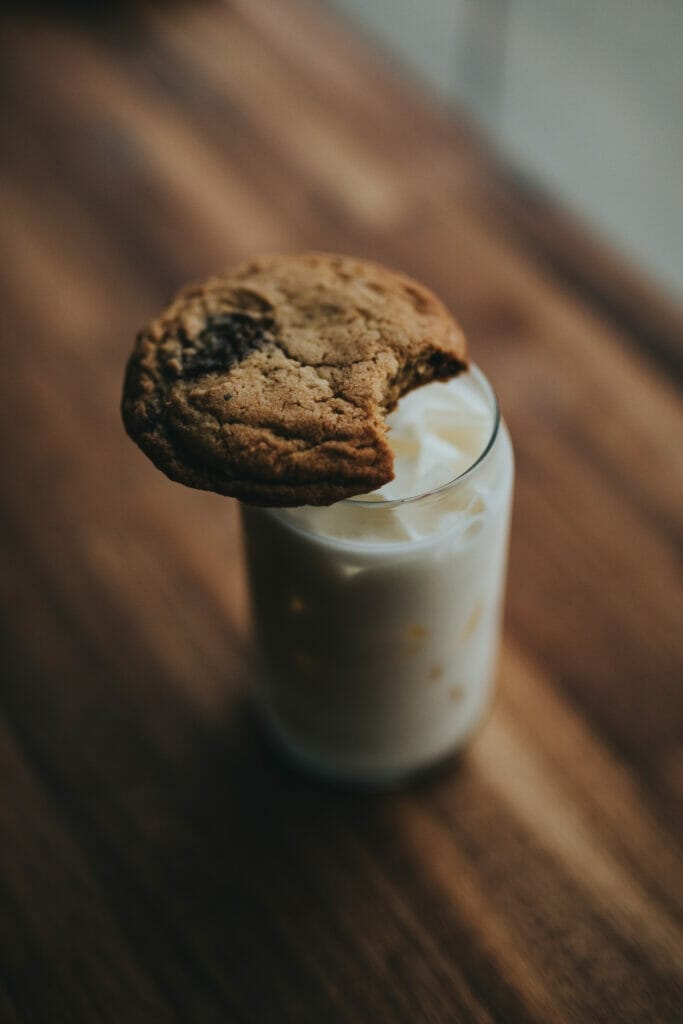
The easiest cookies to make chewy are going to be cookies like chocolate chip cookies and standard sugar cookies (drop cookies, the kind you roll into a ball), but there are also some ways you can make firmer cookies like cut-out sugar cookies chewier by following these steps.
There’s a variety of tips, ranging from some that don’t require any changes to the recipe and some that need a little extra effort and love, so no matter the amount of effort you’re willing to put in to make chewy cookies, we’ve got you covered!
Our Favorite Quirky Kitchen Gadgets
- Select-A-Spice Auto-Measure Carousel – Get your exact spice amount without measuring spoons with this spice carousel. Simply twist the dial for a perfect 1/4 teaspoon measurement!
- Silicone Utensil Rest with Drip Pad – This utensil rest keeps my countertops neat & drip-free!
- Snap N Strain Pot Strainer and Pasta Strainer – I love this strainer because it fits on all pots and pans while also being compact and easy to use!
- Herb Scissors Set – I use these scissors to cut and mince fresh herbs directly into any dish without the tedious work of cutting each herb or dirtying up a cutting board.
- Knife Sharpener – I love how quirky and nifty this rhino shaped knife sharpener is. It definitely puts the FUN in functional!
1. Put in an extra egg yolk (just the yolk!)
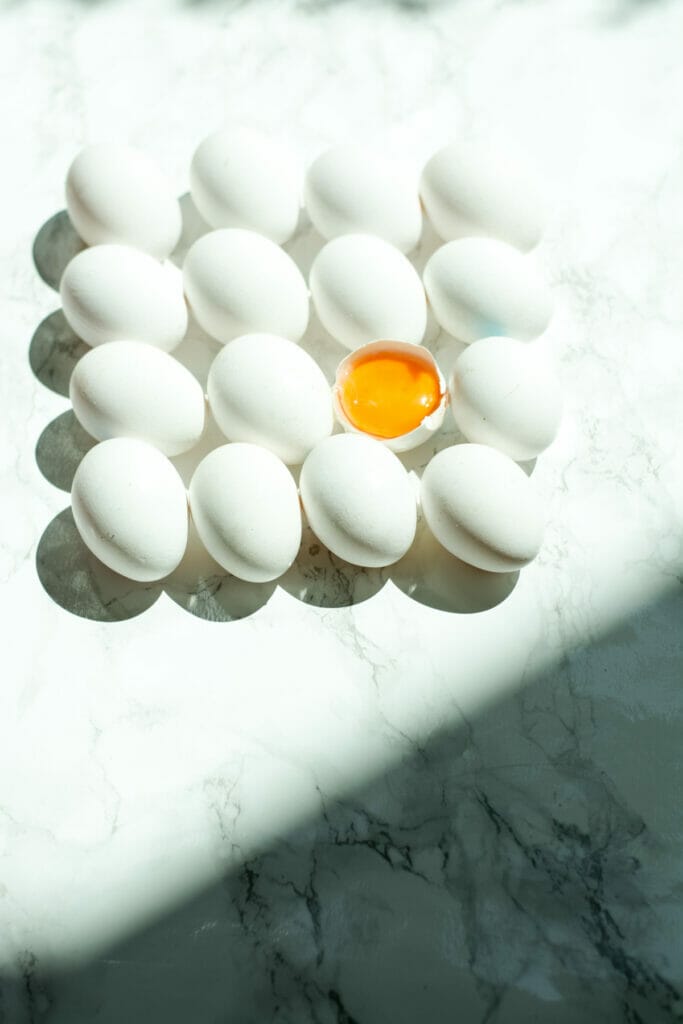
Many cookie recipes involve eggs, but did you know that by adding an extra egg yolk, you can get chewier cookies?
The reason is because the egg yolk has fat, and fat helps cookie dough become chewy because it makes more tender cookies.
But of course be sure that you’re only adding the yolk, not the entire egg. If you add too many eggs, you’ll make cakey cookies, not chewy cookies.
That extra rich flavor is also a side bonus, and the egg yolk will add some moisture that means your cookies are totally going to be the talk of the bake sale.
2. Use molasses instead of sugar
If your cookie recipe has sugar in it (and it probably does), consider substituting some of that sugar with molasses.
Molasses is often used in baking when you need to make something chewy, and if you’ve never heard of it, imagine a thick syrup.
It actually comes from the sugar making process and has a very rich sweetness to it.
Molasses will also add moisture into your cookie.
You don’t need to swap the entire measurement of sugar for molasses.
Simply subtract one tablespoon of regular sugar from your recipe and add in one tablespoon of molasses.
Boom.
Chewy cookies!
This works especially way in chocolate chip cookies.
3. Use honey instead of sugar
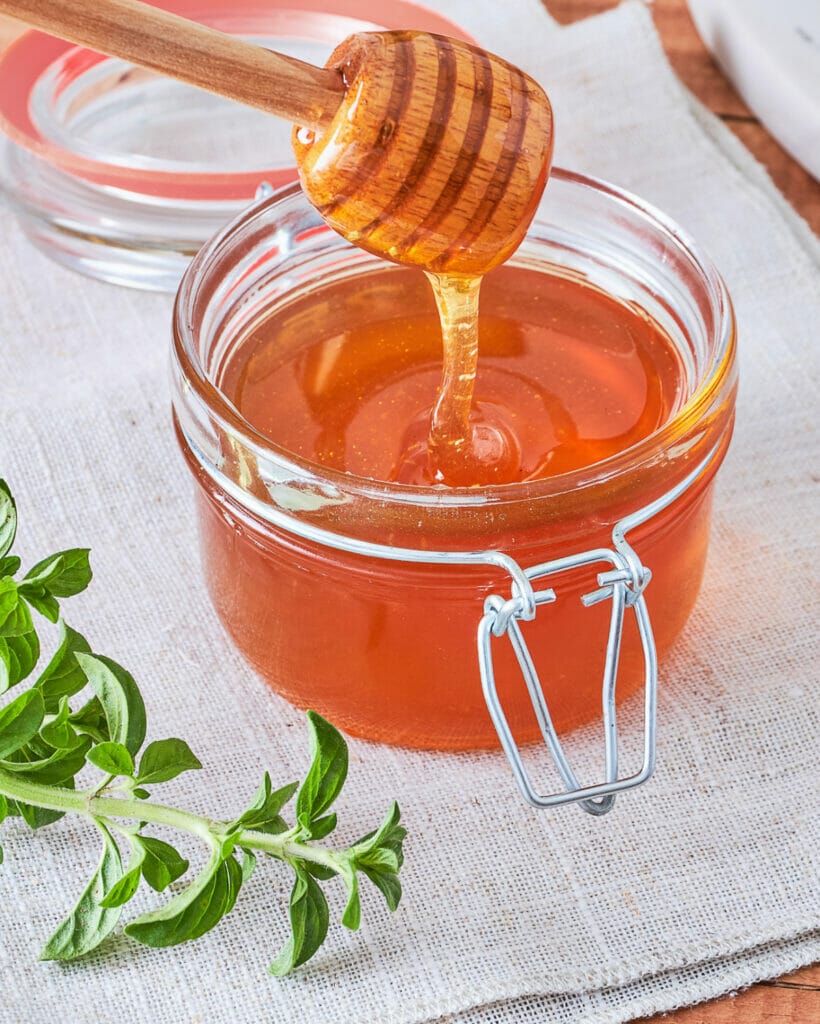
Honey is a fantastic natural sweetener, and you can do the same thing as you did with the molasses and swap out one tablespoon of honey for one tablespoon of sugar.
Think about honey and how thick it already is.
This texture is going to help add chewiness to your cookies and give you that natural sweetness.
The flavor won’t be quite as strong as molasses, but it might be easier for you to get your hands on and you may already have it in the pantry.
4. Flatten your cookies after baking
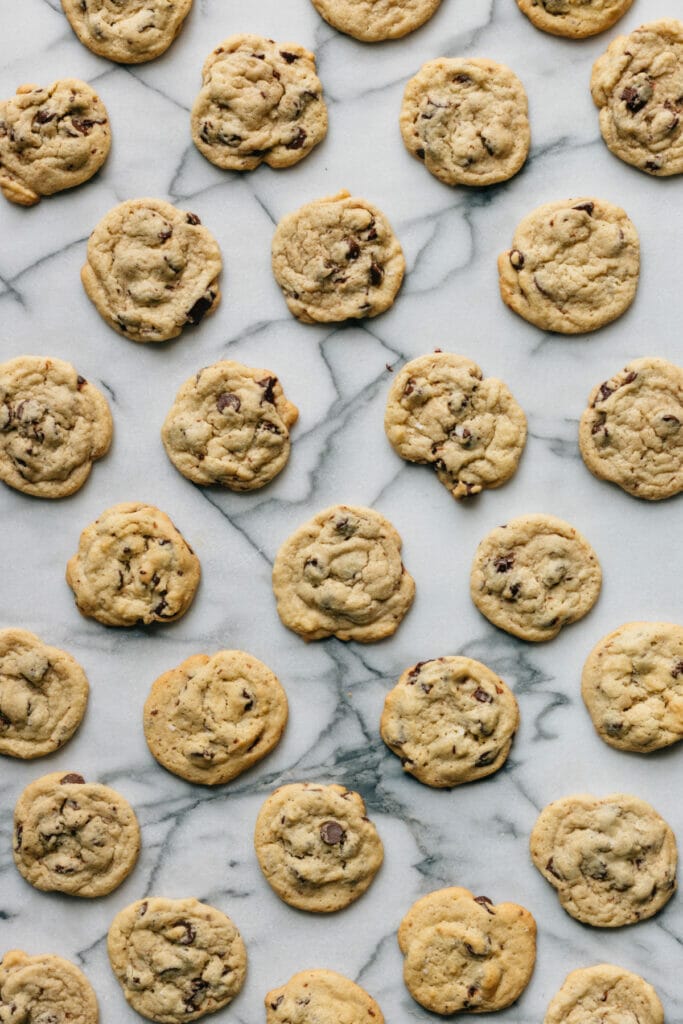
If you don’t want to do a ton of swaps or extra work, here’s a fun tip: just flatten your cookies after baking.
Take the freshly baked cookies out of the oven and using the bottom of a cup, press them down.
Form them into a bit of disc shaped, flatter cookies.
What this does it take out a bit of that puff and makes the dough smush together (technical terms, we know).
This, in turn, makes for a denser cookie, and a denser cookie is inherently chewier!
5. Mix in oats

Got oats lying around?
Oatmeal cookies are usually very chewy, but you don’t have to just make oat cookies to get this effect.
Add in about half a cup of oats to a chocolate chip cookie recipe.
You won’t be able to taste the oats, but you’ll get the chewiness from them and that’s something to celebrate.
6. Try brown sugar

Instead of using white sugar like the recipe asks for you, you can swap out brown sugar and it will make your cookies so much chewier.
Brown sugar leads to a richer flavor and a denser cookie, and while your cookie may be a bit darker in color, the flavor will be out of this world.
This works especially well in chocolate chip cookies, as well as sugar cookies.
In fact, most chocolate chip cookies are actually made with brown sugar!
You don’t have to go the whole way, if you don’t want.
You can swap out any amount of brown sugar for white sugar in your recipe, whether that’s 1 tablespoon, half the amount, etc.
Also, here’s a top tip: you can do this in other desserts too!
Not just cookies!
7. Slam the tray on the counter when freshly baked
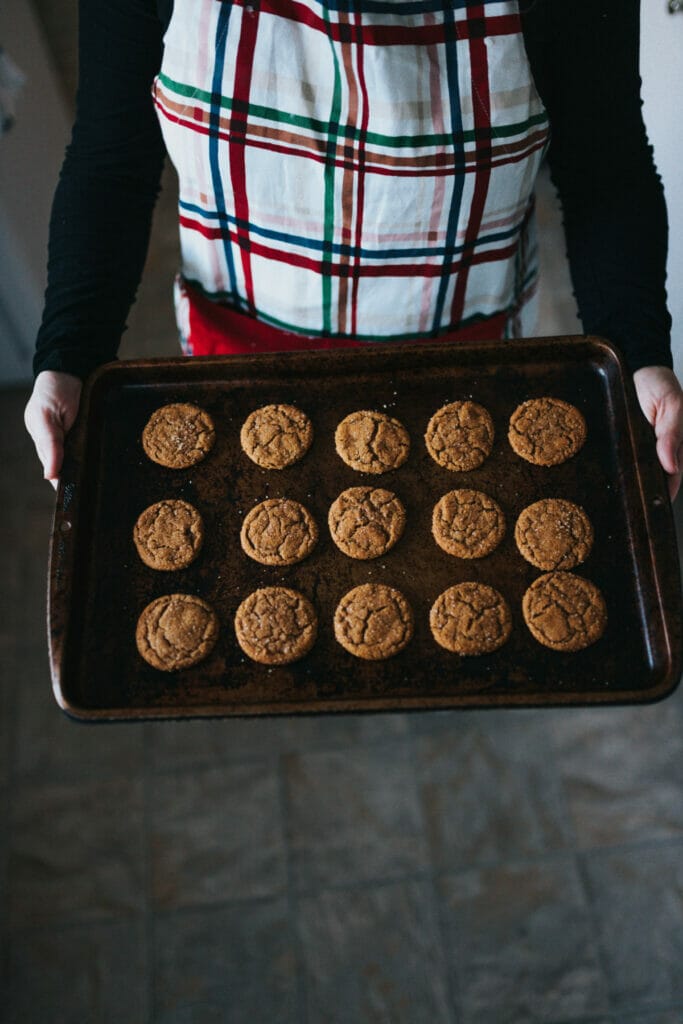
Feeling like you have some extra energy you’d like to get on?
You can, all in the name of making chewy cookies!
As soon as you take out the baking tray from the oven, put out a chopping board to protect the counter and then drop or bang the tray on it a few times.
This is going to help the cookies flatten out, which, like the method where you compact the cookies yourself with the bottom of a cup, will help you end up with chewier cookies.
8. Try half bread flour instead of regular flour
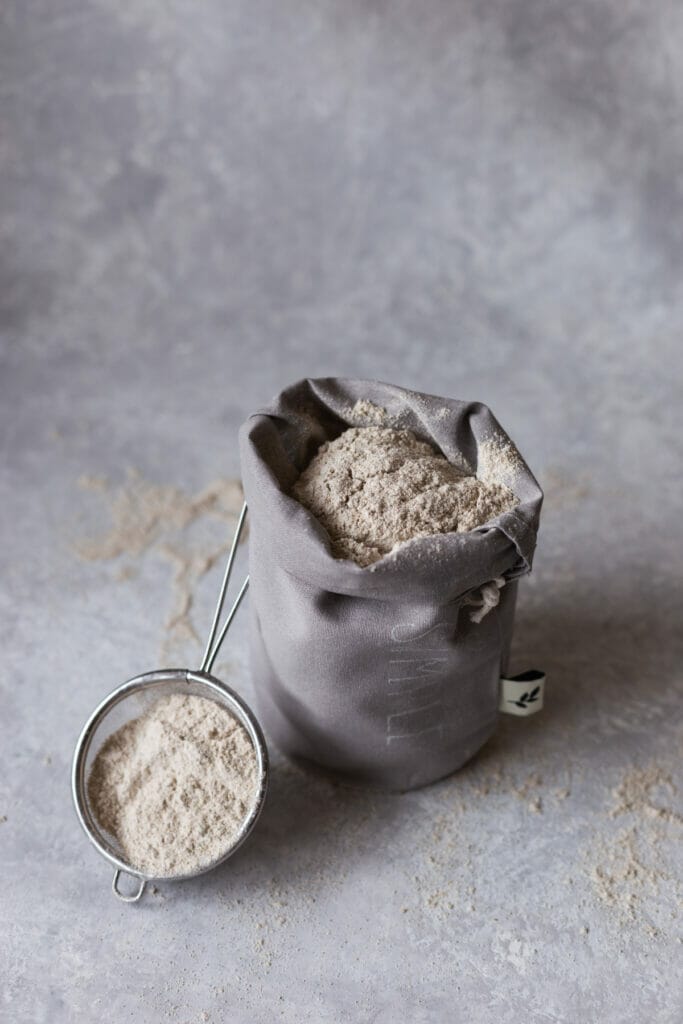
Flour is an interesting thing, as each type of flour has different amounts of gluten.
Bread flour leads to more gluten formation, which means that if you use it in cookies, you’ll get a chewier cookie than if you used normal or all-purpose flour.
We wouldn’t recommend swapping all of the regular flour out for bread flour, though, as it may mean that you create too much gluten (this makes a cookie hard).
Go ahead and swap out half of the amount of flour with the same amount of bread flour, or if you want to play on the safe side, do a 1/4th swap.
This will lead to a chewier cookie without going too hard.
9. Try browning your butter
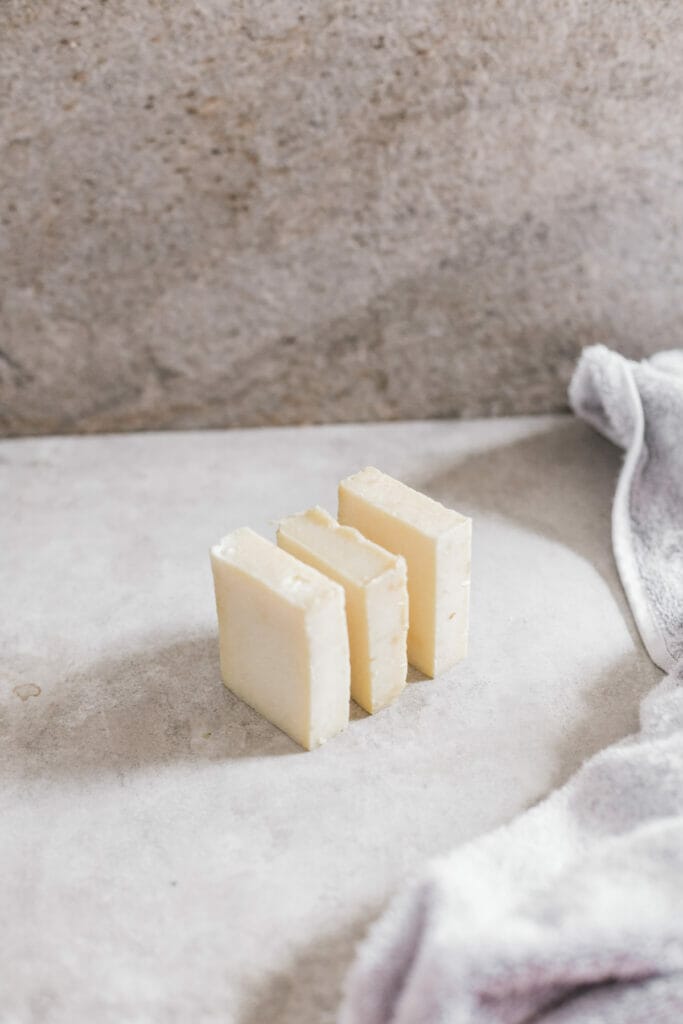
While there are plenty of cookie recipes that already call for browned butter, you can add browned butter instead of just normal butter for a chewier texture.
Browned butter will help the cookie go flatter and denser, and thus chewier.
To brown butter, you simply cook it carefully in a pan (it will literally go brown), and this brings out a super rich flavor (a little bit nutty) from the butter.
It’s the heating process that turns it from regular butter to browned butter.
Your cookies will be decadent and delicious, and may even have a slight toffee flavor to them.
Do the full swap, or swap out half the amount of regular butter for browned butter to test it out first.
10. Use maple syrup instead of sugar
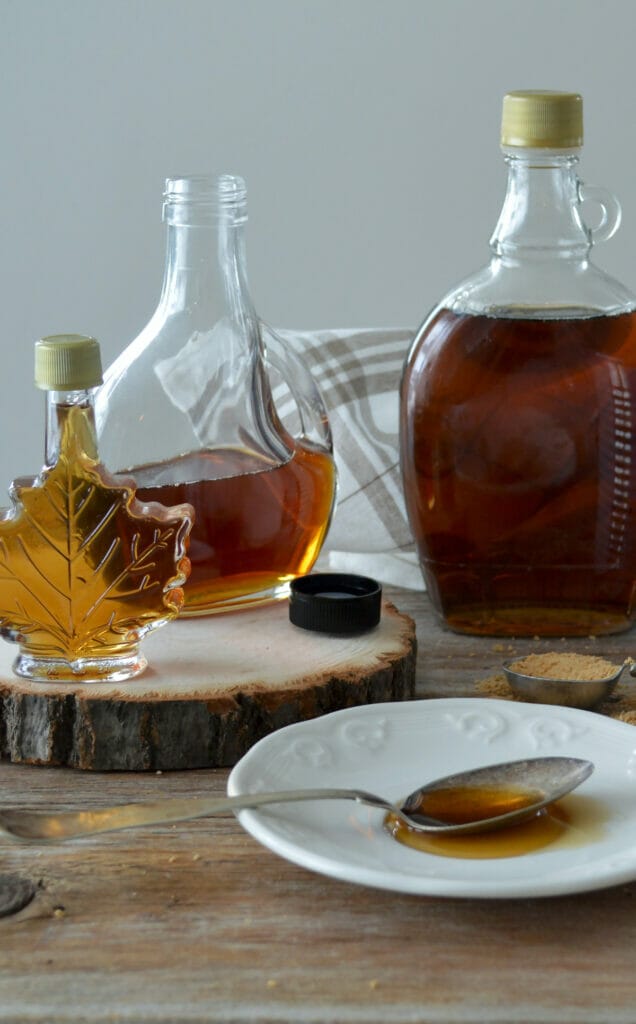
Yes, you can totally use maple syrup (or golden syrup) instead of sugar!
Maple syrup will lead to a bit of a maple-y flavor, but that’s not always a bad thing when it comes to cookies.
You won’t get the same intense flavor as molasses, but you’ll still get a chewy cookie that’s sweet and delicious.
Syrup is naturally sticky, holding in moisture, and helps you achieve that chewier texture based on those properties.
11. Try using melted butter
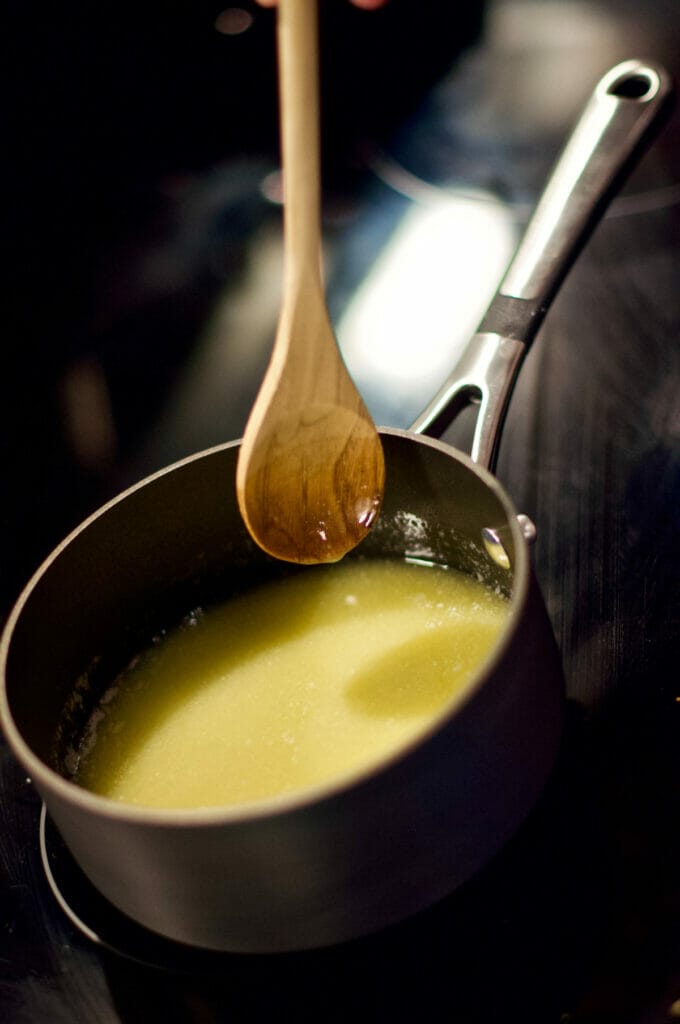
Often, if you want puffy cookies, you will not use melted butter.
This is because using melted butter means that you will end up with a flatter cookie, and often people want a classic “puffy” cookie.
But if you want chewy, then melted butter is totally your friend!
Use melted butter instead of room temperature butter before adding it to the dough.
Your cookie will spread more in the oven (because the butter is already melted, so heating it more will make it expand even further) and you will end up with a chewy cookie instead of a puffy one.
Hey! Want more expert cookie baking hacks? Check these out!
- Exactly how long homemade cookies last
- Can you bake cookies on aluminum foil?
- 7 easy ways to soften hard cookies
- Oops! Burned cookies! Here are 9 ways to fix them
- Help! My cookie dough is crumbly!
- Why are my cookies burnt on the bottom?
- How long does cookie dough last?
- Tips on Avoiding Cakey Cookies
- Exactly how to freeze your cookie dough
- The ultimate guide to chilling cookie dough
- Help! Too much butter in cookies: what to do!
- Tips on Making your Cookies Super Moist
- Exactly how to bake your frozen cookies
- Can you use salted butter in cookies?
- Expert cookie storage tips
- Help! I’m out of butter – can I still make cookies without butter?
- How to make cookies without vanilla extract
- Help! How to make cookies without brown sugar
- How to use cake flour in cookies
- Help! How do I make cookies without eggs?
- Can you make cookies without baking soda?
- Can you use bread flour in cookies?
- Exactly how to make cookies more puffy
- How to make cookies without baking powder
- How to fix wet and sticky cookie dough
